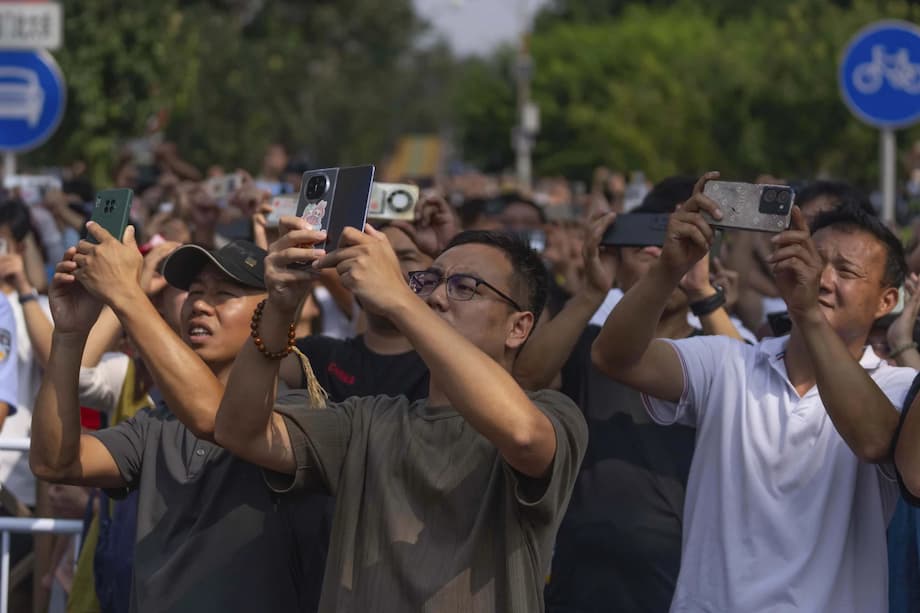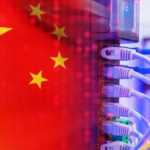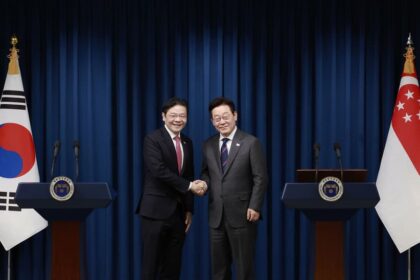How Chinese citizens weigh power, partnership, and risk
A rare nationwide poll of attitudes inside China points to a public that is wary of the United States, worried about a potential crisis over Taiwan, and confident about China’s global strength, yet divided over whether Beijing should seek a shared leadership role or aim to dominate the world stage. The survey, conducted by the Chicago Council on Global Affairs and The Carter Center in spring 2025, found that only a small share of respondents saw the United States as a friend, while a clear majority perceived US economic competition and a possible US conflict over Taiwan as major threats. Even so, most respondents favored a balanced policy toward Washington that mixes cooperation with efforts to limit American power when necessary.
- How Chinese citizens weigh power, partnership, and risk
- How the public in China thinks about the United States
- Shared leadership or global dominance
- Taiwan remains a flashpoint
- Friends, rivals, and the map of public trust
- Trade, technology, and multilateralism
- How to read polls from inside China
- What to Know
Key findings stand out. Just 17 percent of those surveyed labeled the United States a friend of China. Fifty five percent called economic competition with the United States a major threat. Fifty seven percent said a conflict with Washington over Taiwan is a major threat. At the same time, 61 percent said China should take a balanced approach to the United States, cooperating in a friendly manner where interests align or seeking to limit US power when it does not. Views of partners and neighbors also showed sharp contrasts. Strong majorities labeled Russia and North Korea friends of China, while many saw Japan, the United States, and several US treaty allies as unfriendly.
Support for global engagement is overwhelming. Ninety percent of respondents backed an active role for China in world affairs. Most described the country as already strong on the world stage, and large shares said its influence would grow stronger in the next five years. Trade is popular at home. Seventy three percent said that international trade benefits China’s economy and living standards, and 60 percent favored a policy of global free trade. Chinese leaders have championed multilateral institutions such as the United Nations and the World Trade Organization (WTO), and promoted initiatives like Belt and Road, which Beijing says has cooperation agreements with about 150 countries.
What the new survey shows
The Chicago Council and Carter Center study offers a window into how the public in China weighs power and principle. Many respondents credited China’s influence to military strength, technological innovation, and economic power. Two thirds also pointed to culture as a source of soft power. Confidence at home is strong. Ninety seven percent said China is in at least a somewhat strong position globally.
The public, however, is split on what to do with that strength. Forty eight percent preferred a shared leadership role alongside other powers. Forty one percent favored a dominant role. The data also suggest a belief in national exceptionalism. Roughly seven in ten respondents agreed that China has a unique character that makes it the greatest country in the world. The findings and summary are available from the Chicago Council on Global Affairs at this link.
How the public in China thinks about the United States
Attitudes toward Washington reflect caution, competition, and an appetite for selective engagement. The survey found that the public largely does not view the United States as a friend. Yet the preference for a balanced strategy, with cooperation where possible, underscores awareness of deep ties between the two economies and the cost of unchecked confrontation. Respondents who saw the United States as economically stronger were more likely to support friendly cooperation. Those who viewed China as stronger were more inclined to favor policies aimed at limiting US power. That pattern hints at how perceived leverage shapes policy preferences.
Other research points in a similar direction. A 2024 survey by The Carter Center and Emory University reported that most respondents believed friendly and peaceful relations with the United States are necessary for China’s prosperity, and a majority said force should never be used to resolve the Taiwan issue. Sentiment is not uniformly dovish. A sizeable minority in that earlier study expressed openness to coercive steps under certain conditions, and supportive views of Russia’s war in Ukraine were common. The balance of risk and restraint runs through public thinking about relations with Washington.
Balancing competition and interdependence
Economic interdependence sets boundaries on rivalry. Trade and investment links, global supply chains, and joint work on transnational issues such as climate change and global health remain part of the agenda even amid tariffs and technology controls. A balanced approach signals support for steady crisis management, guardrails on military activity, and basic diplomatic engagement, while leaving room for economic and technological competition.
Shared leadership or global dominance
The headline split over China’s global role is striking. Nearly half of respondents favored shared leadership rather than outright dominance. That preference aligns with public support for working through multilateral institutions and with a vision of a world where major powers, including China, the United States, the European Union, India, and others, all have a voice. Those who favor a dominant role endorsed a more assertive path tied to China’s military power, industrial capability, and technological prowess.
Public backing for multilateral diplomacy provides political support for Beijing’s frequent appeals to international law and global institutions, including the UN and WTO. It also fits with China’s outreach through Belt and Road, which has financed infrastructure, logistics, and connectivity projects across Asia, Africa, the Middle East, and parts of Europe and Latin America. Advocates of shared leadership see partnerships as a way to spread risk and costs, gain markets for Chinese technology and manufacturing, and build coalitions that can offset pressure from the United States.
Confidence at home, skepticism abroad
Views outside China present a mixed picture. Global polling in early 2025 by Pew Research Center reported that a median of 49 percent had a favorable view of the United States across 24 surveyed nations, compared with 37 percent for China. The gap is narrowing, as images of the United States have worsened in several countries while views of China ticked up in some places. In many advanced economies, views of China remain largely negative. In parts of Africa and Southeast Asia, China rates more positively. An Afrobarometer survey across 29 African countries found that six in ten respondents saw China’s influence on their country as positive. Asia Society’s Global Public Opinion on China initiative has tracked swings in views since 2000, including a steep drop during the first year of the pandemic in parts of the Global South, followed by a more varied pattern with Africa and the Middle East holding steady and parts of Southeast Asia improving. A Pew summary of the 2025 global survey, with detailed country tables on views of the United States, China, and their leaders, is available at Pew Research Center.
Global views of leaders are cautious. Confidence in both President Xi and President Trump is low in many countries, though patterns vary by region. In Europe and parts of Asia, publics express concern about China’s expanding power and military buildup. Many also cite concerns about human rights and interference in domestic politics. These external views form the environment in which China seeks either shared leadership or dominance.
Taiwan remains a flashpoint
Taiwan sits at the heart of public threat perceptions. The survey found that a possible conflict with the United States over Taiwan ranks among the top concerns. Beijing claims Taiwan as its territory. The People’s Liberation Army has increased pressure around the island with patrols, exercises, and gray zone tactics. Public attitudes toward the Taiwanese population, however, are far warmer than views of the government in Taipei. Nine in ten respondents said the people of Taiwan are friendly toward China, while fewer than half described the Taiwan government as friendly.
Findings from the Carter Center and Emory University study in 2024 add nuance. Fifty five percent of respondents agreed that force should never be used to resolve the Taiwan issue. Roughly one quarter disagreed. The most frequent answer to a hypothetical timeline for coercive steps aimed at unification was within five years. The mix of caution and firmness reflects a public that dislikes outright war, yet accepts pressure tactics and seeks tangible gains on issues seen as fundamental to sovereignty.
Why views on Taiwan matter for policy
Public preferences can shape the space for leaders to de escalate or escalate during a crisis. Strong backing for active global engagement, combined with anxiety about a Taiwan conflict, puts a premium on crisis hotlines, transparency about military activities, and credible guardrails that reduce the risk of miscalculation. Warm attitudes toward the Taiwanese population could also support people to people ties even as official relations remain tense.
Friends, rivals, and the map of public trust
Perceptions of friends and rivals follow clear lines. The Chicago Council and Carter Center survey showed that 83 percent saw Russia as a friend of China. North Korea rated as a friend with 76 percent. Respondents placed Australia, the European Union, and Vietnam near the middle, with about half calling them friends. Majorities labeled India, the Philippines, and South Korea as not friends. The most negative ratings went to Japan and the United States. Respondents described a tough neighborhood in East Asia, and many saw a world divided into camps where security and economic interests matter more than shared values.
Other data reinforce that picture while adding complexity. The China Institute at the University of Alberta reported in 2025 that respondents saw the United States as the most likely adversary in a future military conflict, with Japan second. Yet the same survey found that the United States again ranked as the top destination for overseas study, and a leading choice for work opportunities. Canada remained a top choice for emigration. That combination suggests that distrust of foreign governments and interest in personal education and careers can coexist.
How other regions view China
Attitudes toward China vary across regions. Afrobarometer found that on the African continent, favorable views of China’s influence outpaced those of the United States and the European Union. Asia Society’s compilation shows the data gap has narrowed or widened depending on region, time period, and headline events. Pew’s 2022 study reported sharp increases in unfavorable views of China in advanced economies during the Xi era, tied to issues such as the South China Sea, pandemic narratives, and human rights. The 2025 Pew survey shows a narrower gap between the United States and China in some places, yet the net picture in high income democracies remains challenging for Beijing.
Trade, technology, and multilateralism
Public support inside China for trade and open markets remains strong. Seventy three percent said international trade is good for China’s economy and standard of living. Six in ten preferred a policy of global free trade. For readers, free trade refers to low or zero tariffs and few non tariff barriers on goods and services that cross borders. Protectionist policies raise tariffs or impose controls to shield domestic industries. The United States has applied sweeping tariffs on a range of imports. China has used industrial policy and selective opening at home while presenting itself as a defender of multilateral rules abroad.
The survey also found support for working through institutions like the UN even when that means compromise on some policies. Rhetoric and implementation do not always match. Beijing has defended global rules even as governments worldwide scrutinize its state subsidies, market access hurdles, and technology transfer practices. In practice, China’s leaders are blending a push for influence in multilateral bodies with a tighter focus on self reliance in advanced technology, from semiconductors to clean energy supply chains.
How to read polls from inside China
Surveying public opinion in a tightly managed information space comes with caveats. Sampling, access, and social desirability bias can affect what respondents are willing to share. The Chicago Council and The Carter Center have made a sustained effort to capture a range of views, and their methodology and questionnaires are published for outside scrutiny. Patterns across multiple surveys point to consistent themes, including strong support for an active foreign policy, a preference for trade, and caution about outright war.
Academic work also finds a more diverse public than many assume. Research summarized by the Center for Strategic and International Studies highlights that wealthier and more educated respondents often hold more liberal, pro market, and less nationalistic views, and that many Chinese citizens prefer diplomatic and economic tools over military solutions. Students from China who study in the United States often report more liberal attitudes than peers who remain at home. The University of Alberta’s 2025 survey reports that social media now dominates as the source of international news, especially for younger respondents, which can intensify the velocity of narratives during crises.
For policymakers and business leaders outside China, the data suggest that public support inside China for engagement and trade coexists with hard lines on sovereignty and security. That mix shapes how far leaders in Beijing can go in either easing tensions or tightening pressure. It also affects the reception foreign governments and companies can expect when engaging with Chinese audiences.
What to Know
- Only 17 percent of respondents in China labeled the United States a friend, the lowest rating among countries asked about in the survey
- Fifty five percent called US economic competition a major threat, and 57 percent said a conflict over Taiwan is a major threat
- Sixty one percent favored a balanced approach to Washington that mixes cooperation with efforts to limit US power when needed
- Ninety percent supported an active role for China in world affairs, and 97 percent viewed China as at least somewhat strong globally
- On global leadership, 48 percent preferred shared leadership, while 41 percent favored a dominant role
- Russia and North Korea were widely viewed as friends, while Japan and the United States were most often labeled not friends
- Seventy three percent said international trade benefits China’s economy and living standards, and 60 percent supported global free trade
- Views abroad are mixed. Pew’s 2025 survey found a median of 49 percent favorable toward the United States and 37 percent toward China, with Africa and parts of Southeast Asia more favorable to China than many advanced economies
- On Taiwan, a majority in a 2024 companion study opposed using force, yet many supported pressure tactics and some saw a short timeline for coercive steps
- Multiple surveys show a Chinese public that is confident in national strength, cautious about war, supportive of multilateralism, and divided over whether to share or dominate global leadership












